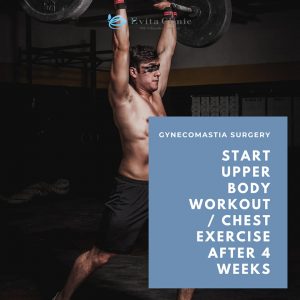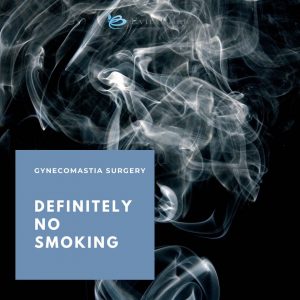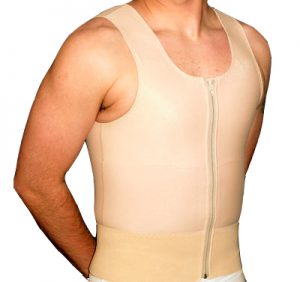Returning to Work
We understand that getting back to your daily routine is important, and you might be wondering when it’s safe to return to work. Here’s a simple guide:

Office or Desk Jobs: You can usually return to work the day after surgery. Before heading back to work, we recommend a quick follow-up visit to the clinic. The follow-up only takes about 20 minutes, ensuring your recovery is on track.

Physically Demanding Jobs: If your job involves physical labor, such as heavy lifting, operating machinery, or construction work, it's best to avoid strenuous activities for the first two weeks. This will help prevent any strain on the operated area and ensure a smooth recovery.

Exercise and Workouts: We encourage light physical activities to aid recovery. You can start leg workouts, light walking, or gentle jogging as early as a week after surgery. However, wait at least 4 weeks before resuming weightlifting or chest exercises. During the first month, avoid using your arms and chest too much to prevent complications.
Important Post-Op Care Tips

- Healthy Eating: Start with soft, gentle foods and avoid spicy or strong-tasting dishes. You can enjoy most foods, except for alcoholic beverages and overly salty meals.
- Avoid Smoking: Smoking can significantly delay the healing process and increase the risk of infection. This includes traditional cigarettes, e-cigarettes, hookah, and even exposure to secondhand smoke. Avoid smoking for at least 2 weeks post-surgery.
- Handling Fluid Leakage: It’s normal to experience a bit of fluid leakage during the first day. If this happens, replace the dressing with a sterile gauze. Make sure not to open the dressing point as the wound needs to stay protected from contamination.

- Compression Garment: Wearing your compression vest is crucial for your recovery. It prevents fluid accumulation, helps reduce swelling, and supports skin retraction. Wear it for 4 weeks—24 hours a day for the first 2 weeks, then 12 hours a day for the next 2 weeks.
- Showering and Bathing: You can take a shower 1 to 2 days after surgery with a waterproof band on the wound. For hot baths, saunas, or swimming, give your body 4 weeks to fully recover.
- Sponge Pad Care: If you were provided with a sponge pad, apply it around the areola for only 7 days. This helps with healing and provides gentle support.
What to Expect During Recovery
Your chest might appear asymmetrical, lumpy, swollen, or slightly dimpled. Don’t worry—this is a temporary phase that can last for 4 to 6 months. Light daily activities like walking can speed up recovery, but avoid lifting anything heavier than 40 pounds (about 18 kg) during the first week. It’s okay to roll luggage, but avoid lifting it.
- Massage and Stretching: After 2 weeks, start light massage and gentle stretching. The “Biobond (lumps)” under the skin may take 4 to 6 months to gradually decrease.
- Scarring: It’s normal to develop ‘Hypertrophic scars’ after chest surgery. Proper post-op care is essential to minimize their appearance.
When to Contact Us
our safety and comfort are our top priorities. Please reach out to us immediately if you experience any of the following symptoms within 3 to 4 days after surgery:
- Excessive pain
- High fever
- Yellowish discharge from the wound
- Persistent itching
We are here to support you every step of the way. If you have any questions or concerns, please do not hesitate to contact us. Your smooth and speedy recovery is our goal!
Использование стрипов Steri-strips после операции по удалению гинекомастии
Использование полосок Steri-strips после операции по удалению гинекомастии - Вы не сможете избежать 100% рубцов во время операции через разрез. Даже если вы проведете операцию точно таким же образом, используете одни и те же материалы и технику наложения швов одинаковым образом, результаты будут варьироваться от человека к человеку.
[FAQ] Детское ожирение и гинекомастия
Подростковая гинекомастия поражает 20–30% мальчиков-подростков, причем в большинстве случаев она проходит спонтанно в течение года. Тем не менее, примерно у 10% может развиться стойкое увеличение груди из-за таких факторов, как ожирение, хронический стресс и некоторые лекарства. Детское ожирение, если его не лечить, часто продолжается и во взрослом возрасте и повышает вероятность развития гинекомастии. Более того, исследования показывают, что до 30% случаев могут быть связаны с генетической предрасположенностью, что подчеркивает важность раннего вмешательства в образ жизни и осведомленности о семейном анамнезе.
Гинекомастическая хирургия покрывается Корейским национальным медицинским страхованием
Иностранцы, проживающие в Корее, могут претендовать на Корейское национальное медицинское страхование, которое значительно снижает стоимость операций по гинекомастии — особенно для случаев 2-й степени и выше.
[FAQ] Вызывают ли белковые добавки или алкоголь гинекомастию?
Белковые добавки также могут быть одной из нескольких причин гинекомастии.
[FAQ] О степени гинекомастии
Эти степени гинекомастии незначительно варьируются от человека к человеку. Хирургический метод должен быть выбран в соответствии с возрастом пациента, мышечной массой, периодом восстановления, образом жизни и потребностями пациента. В связи с этим вы проконсультируетесь со специалистом и примете решение.
[FAQ] Как самостоятельно диагностировать гинекомастию?
Доктор Чон объясняет, как самостоятельно диагностировать гинекомастию.

Leave A Comment
You must be logged in to post a comment.